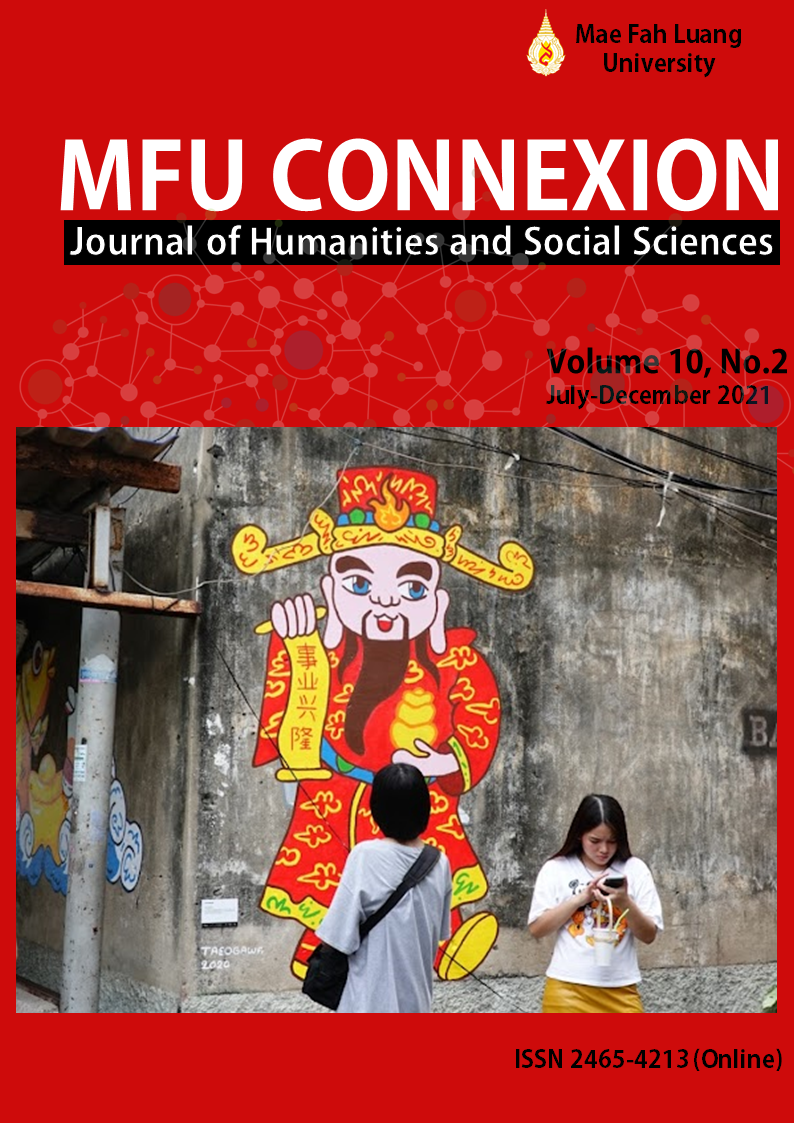The Impact of Technology Acceptance and Personnel Satisfaction in the Organization on the Effectiveness of Building Information Modeling
Main Article Content
Abstract
The objectives of this research were to (1) study the impact of technology acceptance on the effectiveness of building information modeling and (2) study the impact of personnel satisfaction in the organization on the effectiveness of building information modeling used in construction projects. This study is the quantitative research using applied conceptual frameworks of the technology acceptance model and the organizational culture theory. The data was collected by the questionnaire survey among people related to the construction business. The stratified random sampling in this research composed of 425 samples divided into 3 levels of job positions, which were 101 senior project managers, 173 middle-level project managers, and 151 operating level workers. Here, the STATA program was used for processing the analysis of data by structural equation model, bivariate analysis, and Logit model.
The results of this research provided that (1) The impact of technology acceptance factor by senior project managers were highest. The main reason is that they can recognize the benefits of the building information modeling technology systems, which can successfully make the construction projects of the organization and can use the information obtained to determine the corporate strategy for competitive business advantage. (2) The impact of personnel satisfaction factor of middle-level project managers were more than any other position because they must coordinate with all levels. The operating level workers must perform the work according to the command of a higher level. Therefore, technology acceptance in using building information modeling more than satisfaction.
Article Details

This work is licensed under a Creative Commons Attribution-NonCommercial-NoDerivatives 4.0 International License.
Copyright
Connexion: Journal of Humanities and Social Sciences has an exclusive right to publish the accepted articles in any form. However, the author retains the following rights:
1. The right to the ownership of the article;
2. The right to use all or part of the article in his/her other works;
3. The right to re-produce the article for personal use or for use in the author’s organisation, in which case the author must obtain permission from Connexion: Journal of Humanities and Social Sciences;
4. The right to make copies of all or part of the work for educational use or for the author’s use in classroom teaching; and
5. The right to include the work (both the preprinted and printed versions) in an institutional repository.
References
Almeida, G., & Brito Mello, L. C. B. (2017) Analysis of organizational culture in Brazilian building companies to evaluate changes required by BIM technology, Business Management Dynamics, vol. 7, no. 4, pp. 1-16.
Azhar, S. (2011) Building Information Modeling (BIM): Trends, benefits, risks, and challenges for the AEC industry, Leadership and Management in Engineering, vol. 11, no. 3, pp. 241-252
Davis, F. D. (1989) Perceived usefulness, perceived ease of use and user acceptance of information technology, MIS Quarterly, vol. 13, no. 3, pp. 319-339.
Deal, T. E., & Kennedy, A. A. (1982) Corporate cultures: The rites and rituals of corporate life, Reading, MA: Addison Wesley.
Handy, J., Whiddett, R., & Hunter, I. (2001) A technology acceptance model for inter-organizational electronic medical records system, Australasian Journal of Information Systems, vol. 9, no. 1, pp. 39-50.
K. Pair. (2018) Corporate strategy (กลยุทธ์ระดับองค์กร คืออะไร), Available: https://greedisgoods.com/กลยุทธ์ระดับองค์กร-corporate-strategy/ [10 December 2020] (in Thai)
Kogut, B., & Kulatilaka, N. (2001) Capabilities as real options, Organization Science, vol. 12, no. 6 (November – December), pp. 744-758.
Navimipour, N. J., & Soltani, Z. (2016) The impact of cost, technology acceptance and employees’ satisfaction on the effectiveness of the electronic customer relationship management system. Computers in Human Behavior, vol. 55, Part B, pp. 1052-1066.
Pauwels, P., & Matthyssens, P. (2004) Strategic flexibility in export expansion: Growing through withdrawal, International Marketing Review, vol. 21, no. 4/5, pp. 496-510.
Qin, X., Shi, Ye., Lyu, K., & Mo, Y. (2020) Using A TAM-TOE model to explore factors of Building Information Modeling (BIM) adoption in the construction industry, Journal of Civil Engineering and Management, vol. 26, no. 3, pp. 259-277.
Ratchagit, T. (2019) Management concept (แนวคิดและทฤษฎีด้านการบริหารจัดการ), Available: https://th.hrnote.asia/orgdevelopment/190419-management-concept/ [11 December 2020] (in Thai)
Sarvari, H., Chan, D. W. M., Rakhshanifar, M., Banaitiene, N., & Banaitis, A. (2020) Evaluating the Impact of Building Information Modeling (BIM) on mass house building projects, Buildings, vol. 10, no. 2, p. 35.
Schein, E. H. (1990) Organizational culture, American Psychologist, vol. 45, no. 2, pp. 109–119.
Takim, R., Harris, M., & Nawawi, A. H. (2013) Building Information Modeling (BIM): A new paradigm for quality of life within Architectural, Engineering and Construction (AEC) industry, Procedia – Social and Behavioral Sciences, vol. 101, pp. 23-32.
Venkatesh, V., Morris, M. G., & Davis, G. B. (2003) User acceptance of information technology: Toward a unified view, MIS Quarterly, vol. 27, no. 3, pp. 425-478.
Yuan, H., Yang, Y., & Xue, X. (2019) Promoting owners’ BIM adoption behaviors to achieve sustainable project management, Sustainability, vol. 11, no. 4, p. 3905.


